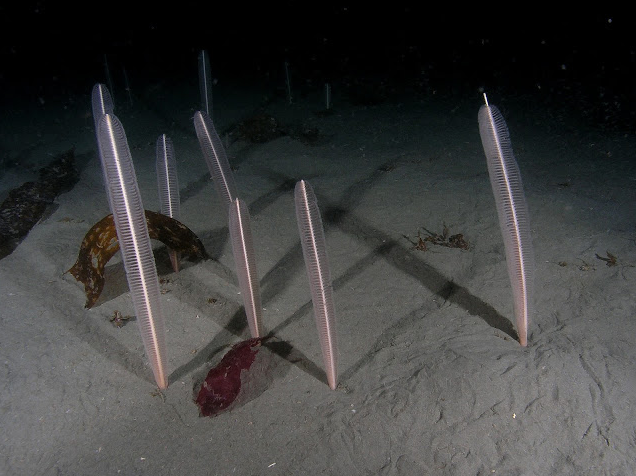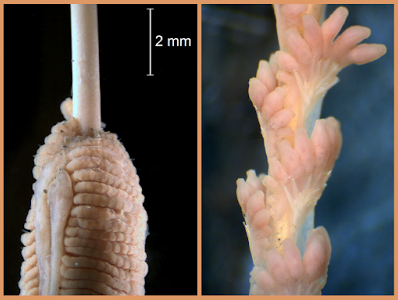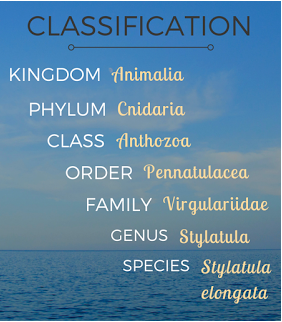The slender sea pen
Sea pens are marine cnidarians that belong to the order Pennatulacea. They are colonial organisms, composed of specialized polyps.

Where there’s a quill, there’s a way
The sea pen resembles an old-fashioned feather quill pen, and is fittingly named Stylatula elongata.
Sea pens are a type of octocoral, or soft coral, which are related to jellyfish and anemones. They may not get as much love as their glamorous cousins, the reef-building hard corals, but sea pens are fascinating creatures that can live to be 100 years old, glow in the dark and live in the soft sediments of Puget Sound.
Many heads are better than one
Glow with the flow
In rod we trust
Like other sea pens, S. elongata is supported by a hard white skeletal rod made of calcium that looks like a lollipop stick. At the base of the rod is a muscular, bulbous holdfast called the basal peduncle that anchors it in the soft sediment.









